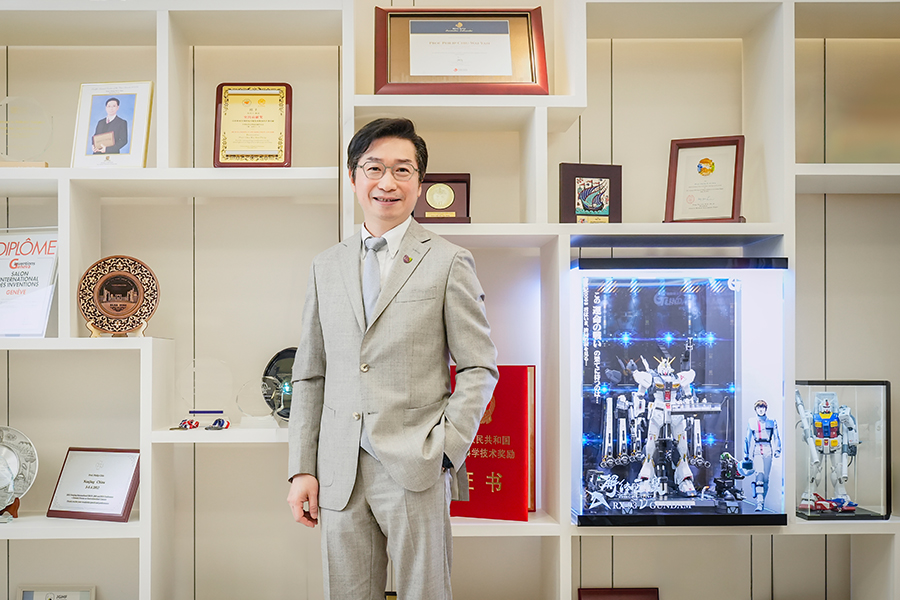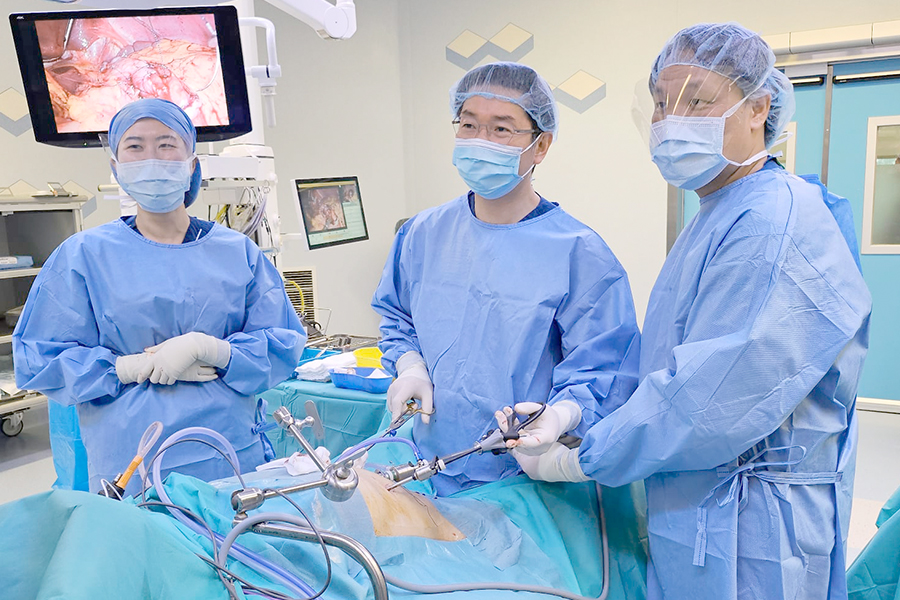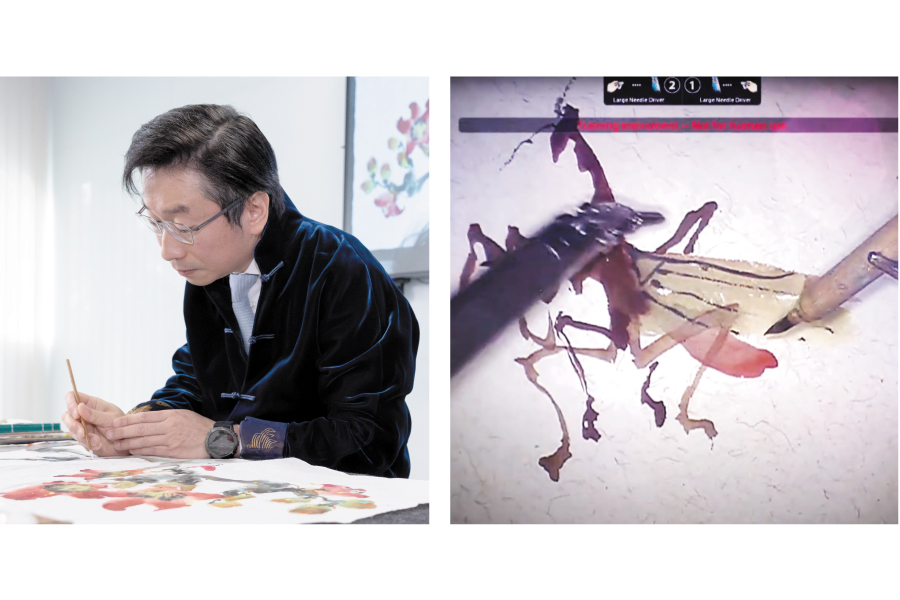Pioneering robotics surgeon turns science fiction dreams into reality
 Professor Philip Chiu Wai-yan, the current Dean of the Faculty of Medicine at The Chinese University of Hong Kong (CUHK), was appointed as Hospital Authority (HA) Board member earlier this year. He joined the HA in 1994 and has worked at United Christian Hospital (UCH) and Prince of Wales Hospital (PWH). As a pioneer in robotic endoscopic surgery, he performed the first endoscopic submucosal dissection in Hong Kong in 2004 and the first robotic minimally invasive oesophagectomy at PWH in 2009.
Professor Philip Chiu Wai-yan, the current Dean of the Faculty of Medicine at The Chinese University of Hong Kong (CUHK), was appointed as Hospital Authority (HA) Board member earlier this year. He joined the HA in 1994 and has worked at United Christian Hospital (UCH) and Prince of Wales Hospital (PWH). As a pioneer in robotic endoscopic surgery, he performed the first endoscopic submucosal dissection in Hong Kong in 2004 and the first robotic minimally invasive oesophagectomy at PWH in 2009.
His groundbreaking work in robotics stems from a childhood passion for science fiction, in particular Star Trek and the Japanese animation Mobile Suit Gundam. His boyhood hero was Amruo Ray. Two Gundam models have pride of place in Professor Chiu’s office. “I believe in turning imagination into reality. As a child, I dreamt of piloting a Gundam, and now my dream has come true,” Professor Chiu says with a smile. “I can control the surgical robots to perform surgeries and help patients.” After joining the HA Board earlier this year, Professor Chiu invited his fellow members to visit the Multi-Scale Medical Robotics Center (MRC) to see the latest research in innovative medical devices and robotics that have the potential to further transform surgical procedures for patients.
“I believe the goal of scientific research is clinical application, because the ultimate objective is to benefit patients,” he explains. He cites the case of a young female patient who was successfully treated for oesophageal cancer 20 years ago but was left with a large incision scar after a conventional laparotomy. “This case inspired me to promote the development of medical innovation and research on minimally invasive surgery as well as robotic arm surgery system, which continues to improve surgical precision, reduce the size of wounds, and minimise pain and post-operative complications for patients,” he recalls.

Jedi Knights in the battle to raise healthcare standards
As Dean of the Faculty of Medicine, Professor Chiu looks forward to working closely with HA on research and teaching. “Professors are like the Jedi Knights of Star Wars,” he says. “They are highly qualified but few in number, so we need to work together with doctors from different departments in hospitals to train the next generation, to pass on their skills and experience, and to gather a group of trustworthy partners,” he says. Professor Chiu compared the current state of public healthcare in Hong Kong to “a battlefield” with growing numbers of patients. He hopes his observations at the frontline would help devise practical measures, such as the development of artificial intelligence and non-invasive technologies, to help divert patients and ease the pressure on manpower.Away from his high-pressured work, Professor Chiu has a second passion other than science fiction to occupy his free time – Chinese painting. He was inspired by his mother to love painting from an early age and learnt to paint at the age of 14 with the Lingnan School master Zhao Shao-ang. The Lingnan style emphasises eclecticism between Chinese and western cultures, blending the ancient and modern, and keeping the mind open to creativity. Professor Chiu is deeply influenced by this artistic philosophy in his work, which explains why he has been able to draw on a wide range of interdepartmental and interdisciplinary perspectives in the development of surgical robots. “Painting is a way to detoxify my mind,” he reflects. “Everyone, not just healthcare professionals, should have their own little universe – a space to stop and meditate for a while, for half a day or for an hour or two, to take care of yourself and then move on.”
Profile of Professor Philip Chiu Wai-yan
- Dean of the Faculty of Medicine at CUHK
- Director of Multi-Scale Medical Robotics Center
- Motto: Everything can come true if you dare to dream
 Painting with a robotic arm
Painting with a robotic arm